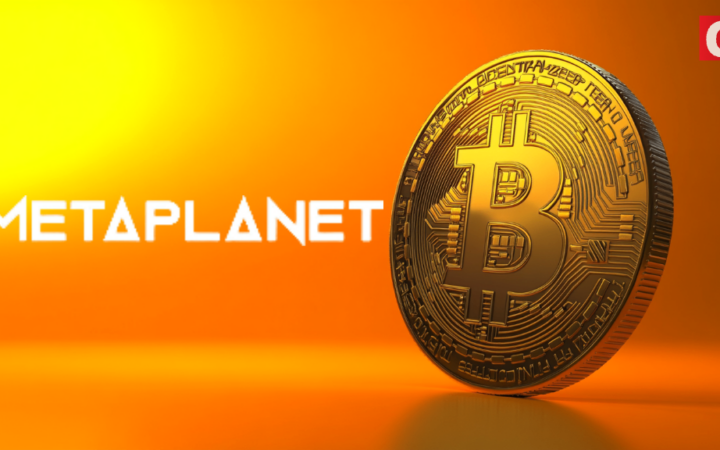
Please check out latest news, expert comments and industry insights from Coinspeaker's contributors.
Cross-chain bridges involving Ethereum now account for roughly $23 billion in total value locked, according to Dune Analytics.

Ethereum co-founder Vitalik Buterin made waves recently when he argued that cross-chain bridges are not the future of crypto. Instead of a proliferation of inter-blockchain bridges and protocols in the future, he wrote, the blockchain sector will be “multi-chain,” defined by different chains and networks existing in parallel.
Though cross-chain bridges have exploded in popularity over the past year, Buterin sees them as fundamentally limited due to security issues. Axie Infinity’s Ronin bridge was recently hacked to the tune of $625 million in ETH and USDC — the largest in a string of lucrative cross-chain exploits. In early February, the Wormhole bridge announced that it had been hacked for about $320 million in wETH. Just days earlier, hackers stole about $80 million worth of cryptocurrency from Qubit’s QBridge protocol.
Bridges involving Ethereum now account for more than $20 billion in total value locked, according to Dune Analytics. This figure has grown by over 4,000% since April 2021, and points to the fact that interchain communication can unlock valuable opportunities and implementations. But in addition to pooling liquidity for multiple chains, the burgeoning cross-chain ecosystem is also pooling risks.
This raises the question of how individual blockchain protocols can most securely and reliably communicate with one another. In Bitcoin’s case, because it doesn’t support smart contracts on its own, Bitcoin liquidity wouldn’t benefit from smart contracts at all without interchain communication. It’s therefore worthwhile to explore how asset transfers between blockchains can be done in the most secure manner possible.
As one of the most influential figures in blockchain, Buterin’s commentary obliquely suggests the potential of different approaches to multi-chain interoperability that eschew bridges altogether, such as direct integrations between blockchains. In contrast to Cosmos’ bridge-hub model and the parachains of Polkadot, for example, the Internet Computer is currently directly integrating with Bitcoin and Ethereum, with its Bitcoin integration scheduled for full implementation this year.
Because direct integrations don’t involve additional trust assumptions or rely on specific actors, they avoid the many issues of bridges — and their progress over the next year could signal a new beginning for interchain communications.
In arguing against bridges, Buterin noted that they increase the attack surface available to bad actors. He explained that multiplying bridges between different protocols exponentiates the risk each network must bear. Bridges expose each chain to the vulnerabilities and bugs of the other chains.
“A better approach may be for a certain blockchain to act as a liquidity hub for the others, which reduces the number of bridges and the attack surface — and that is where the Internet Computer can really shine,” says Max Chamberlin, the founder and CEO of the decentralized exchange InfinitySwap, via email.
The Internet Computer’s use of “chain-key cryptography” enables transactions to be signed using only a single public key for its entire network, which gives it superior scalability to earlier blockchains such as Bitcoin and Ethereum. The planned integrations involve updating the Internet Computer Protocol such that it communicates directly with the ledgers of these blockchains to access their data and verifications.
In the case of Bitcoin, Internet Computer “canister” smart contracts will be able to send transactions in BTC, retrieve transaction outputs, and query the balance of any Bitcoin address, with the use of ECDSA keys (as in Bitcoin and Ethereum) enabling the secure signing of transactions using threshold ECDSA, an extension of chain-key cryptography.
In the case of Ethereum, Internet Computer smart contracts could call directly into smart contracts on Ethereum, and vice versa. The Internet Computer will also have Ethereum Virtual Machine support, with an execution environment for running Solidity-based smart contracts.
By inputting and outputting directly to and from chains like Bitcoin and Ethereum, these integrations avoid centralized bridges or intermediaries and reduces the attack surface available to hackers.
“There isn’t a single server checking for events on another blockchain,” says Chamberlin, who is currently testing a developer preview of the Bitcoin API. “Instead, this process is driven by a consensus protocol that can read events from other blockchains and sign transactions.”
This trustless framework minimizes the scope of the dangers outlined by Buterin.
“The integrations the Internet Computer is pursuing with the Bitcoin and Ethereum blockchains do not rely on any centralized actors,” explains Dieter Sommer, the senior technical program manager overseeing integrations at the DFINITY Foundation. “Neither do we need to trust any such actors, nor do we need to rely on them for any other purpose.”
“The additional attack surface of the integration is kept as small as possible by relying on cryptographic multiparty computation protocols that have been proven to be secure, and by following a high-assurance engineering process to implement them, e.g., by conducting both internal and external code audits of the relevant code,” he notes, referring to the development processes behind the planned integrations.
With the Bitcoin integration set to go live around the end of Q1 and Ethereum to follow around the end of the year, the speed, scale, and interoperability of the Internet Computer could eventually eliminate the need for third-party bridges, supporting secure and efficient interfaces for the growing crypto industry.
Disclaimer: Coinspeaker is committed to providing unbiased and transparent reporting. This article aims to deliver accurate and timely information but should not be taken as financial or investment advice. Since market conditions can change rapidly, we encourage you to verify information on your own and consult with a professional before making any decisions based on this content.

Please check out latest news, expert comments and industry insights from Coinspeaker's contributors.




